Economy
Türkiye inflation expectations down ahead of key rate meeting
Inflation in Türkiye is forecast to fall to 29.66% as of the end of the year, according to a survey by the country’s central bank on Monday that showed expectations continued to improve ahead of a key policy rate meeting this week.
The projection is down from 29.86% expectation in June and 30.35% forecast in May, according to the Survey of Market Participants for June by the Central Bank of the Republic of Türkiye (CBRT).
Aggressive monetary tightening since mid-2023, combined with favorable energy prices, has helped reduce Türkiye’s annual inflation rate by more than half over the past year.
The inflation lastly dipped to 35.05% in June. Monthly inflation was 1.37%, with price declines in key categories such as food and beverages reinforcing the central bank’s view that a disinflation trend is taking hold.
The central bank has repeatedly cited expectations as one factor determining the course of its monetary policy.
In May, it maintained its year-end mid-point estimate for the consumer price index (CPI) at 24%, with an upper band of 29%. Turkish officials continue to emphasize that inflation will remain within this forecast band.
The better-than-expected June inflation print renewed expectations that the central bank would return to an interest rate-cutting cycle at the meeting of its Monetary Policy Committee (MPC) this Thursday.
All but one of the 17 economists in a Reuters poll forecast the bank to cut the policy rate this week. The median forecast was for a 250 basis-point cut to 43.50%, with predictions ranging from 42.50% to 44.50% among those expecting an easing step.
Thirteen respondents expected a cut of 250 basis points, while one predicted the bank to hold rates at 46%.
Most expect rate cuts to continue in the months ahead, with the policy rate falling to 36% by the end of 2025, according to the bank’s survey.
The monetary easing is likely to continue through at least the third quarter of 2026, an earlier poll of economists showed.
If delivered, the move would mark the first cut since a surprise 350 basis-point hike in April, which reversed an earlier easing cycle. That tightening helped stabilize markets after the jailing of Istanbul Mayor Ekrem Imamoğlu sent Turkish assets and the lira sharply lower in March.
Imamoğlu was arrested pending trial over graft charges.
Morgan Stanley also expects a 250 basis-point cut this month, followed by three additional cuts of the same size to bring the policy rate to 36% by year-end.
Markets see inflation 12 months from now falling to 23.39%, the CBRT survey showed on Monday. That is down from 24.56% in the June survey.
The 24-month inflation outlook edged down from 17.35% to 17.08%, the bank said.
On the currency front, participants revised their year-end dollar/lira forecast slightly upward to 43.72, from 43.57. The 12-month forecast for the exchange rate also rose from 47.04 to 47.70.
Meanwhile, gross domestic product (GDP) growth forecasts for 2025 and 2026 remained unchanged at 2.9% and 3.7%, respectively.
Economy
Türkiye’s MÜSIAD sees up to 250 bps rate cut but argues more needed
One of the top business associations is projecting the Turkish central bank to deliver a limited interest rate cut of up to 250 basis points on Thursday but argues that it would fall short of the needs of the real economy.
What is currently needed is a reduction of at least 350-400 bps, Burhan Özdemir, the head of the Independent Industrialists and Businessmen Association (MÜSIAD), told reporters on Wednesday.
Özdemir pointed out that businesses still face limited access to financing, and those who can obtain it are burdened with very high interest rates. He added that the tight monetary policy, which is mainly focused on reducing inflation, has led to “painful” consequences for industrialists.
The Central Bank of the Republic of Türkiye (CBRT) is widely expected to kick off a renewed easing cycle on Thursday with what most surveys expect to be a 250 basis-point rate cut to 43.50% from 46%, as disinflation continues.
“We were expecting a meaningful rate cut, in the range of 350 to 400 bps. But the recent withholding tax hike has slightly dampened those expectations,” Özdemir said.
He was referring to the July 9 decision that raised the withholding tax rate on short-term Turkish lira deposits and investment funds from 15% to 17.5%, and for accounts with maturities up to one year, from 12% to 15%. Economists said this move removed the probability of a strong rate cut.
Aggressive monetary tightening since mid-2023, combined with favorable energy prices, has helped reduce Türkiye’s annual inflation rate by more than half over the past year.
The inflation lastly dipped to 35.05% in June, a better-than-expected print that renewed expectations that the central bank would return to a rate-cutting cycle on Thursday.
Monthly inflation was 1.37% in June, with price declines in key categories such as food and beverages reinforcing the central bank’s view that a disinflation trend is taking hold.
‘Significant’ cuts should follow
The central bank has repeatedly cited expectations as one factor determining the course of its monetary policy.
In May, it maintained its year-end mid-point estimate for the consumer price index (CPI) at 24%, with an upper band of 29%. Turkish officials continue to emphasize that inflation will remain within this forecast band.
The monetary easing is likely to continue through at least the third quarter of 2026, according to economists.
If delivered on Thursday, the move would mark the first cut since a surprise 350 basis-point hike in April, which reversed an earlier easing cycle. That tightening helped stabilize markets after the jailing of Istanbul Mayor Ekrem Imamoğlu sent Turkish assets and the lira sharply lower in March.
Imamoğlu was arrested pending trial over graft charges.
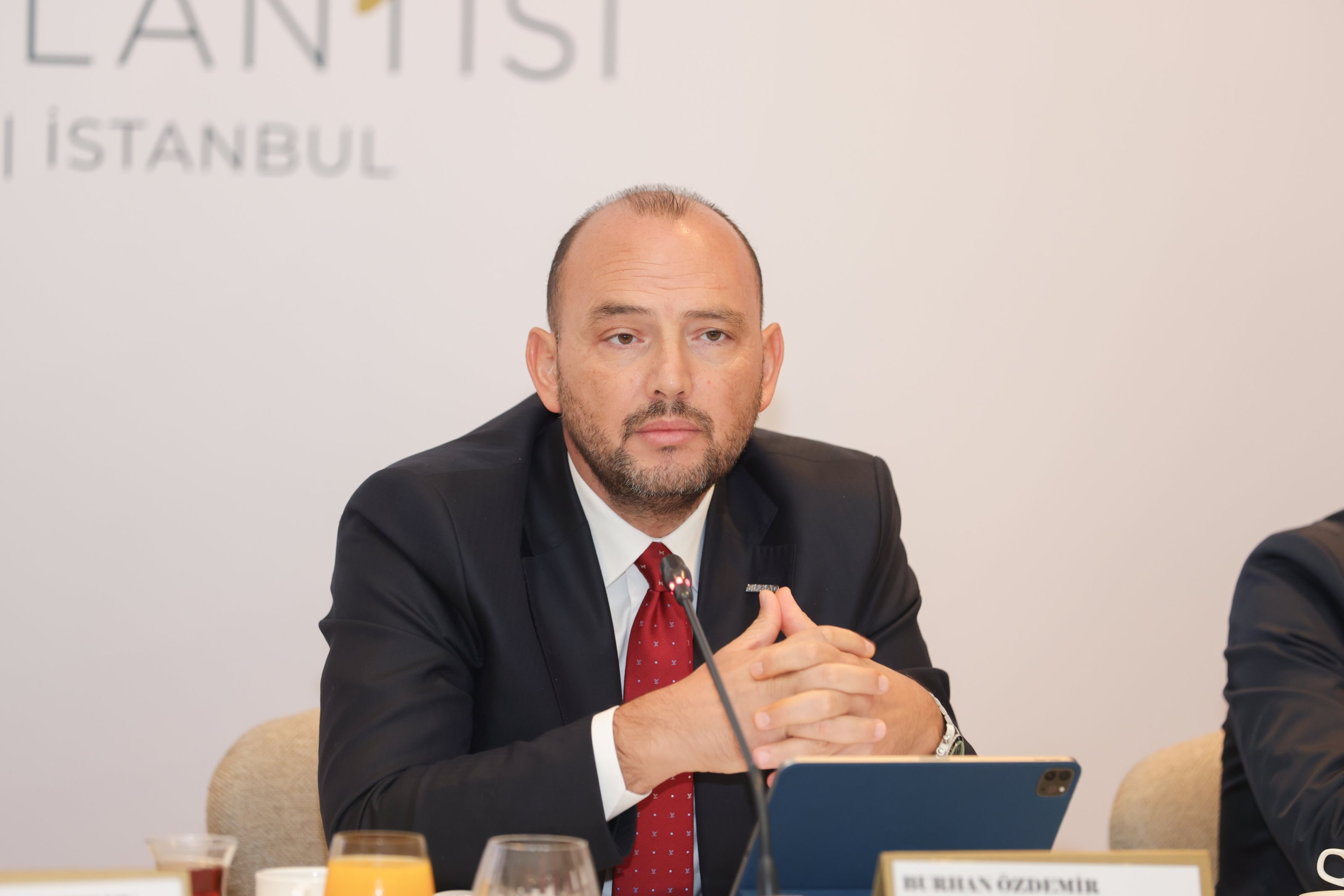
Özdemir said “significant” rate cuts should now be introduced gradually in order to help reduce production costs.
“This figure should also reinforce the belief among businesses and households that financial costs will decline. Otherwise, considering the already high labor costs, extremely high financing costs are being added to producers’ production expenses,” he noted.
“There is a risk of a slowdown in production. Moreover, in a disinflationary environment, this slowdown in production could potentially turn into a more inflationary setting.”
Fairer tax system, overhaul of vocational training
Özdemir’s remarks came at a meeting in Istanbul to unveil the “Value-Based Development Vision Document” of MÜSIAD’s new administration.
The association is working on a road map that will offer a fair and sustainable development model for Türkiye, according to Özdemir.
The aim is to present proposals focused on employment, productivity, competitiveness and financing, while also addressing income and wealth inequality, he said.
Özdemir emphasized that one of the key strategic areas they will address is a fair tax reform aimed at reducing income inequality, pointing to the “serious imbalance and disconnect” in income distribution.
He stressed that a “significant” gap has emerged to the detriment of employees between income tax deducted at source and the taxes paid by self-employed individuals and corporations. “Therefore, we will propose a fair tax reform,” he said.
He suggested that tax incentives could be introduced for families with children and for employees who rent their homes. He also mentioned that they will propose structural reforms regarding the taxation of freelancers.
Regarding vocational education, Özdemir said they are planning to develop model proposals that do not impose additional burdens on the public sector.
“We will first create a human resource inventory and share it in a report. Then, we will present a vocational education proposal. We are also working on a campaign to guarantee jobs for students graduating from vocational high schools,” he said.
Özdemir added that MÜSIAD member companies may implement a pilot model for vocational training, covering the costs themselves.
“We have submitted a model proposal to the Ministry of National Education based on systems used in the U.K., Germany and Switzerland. We are discussing this with them. We believe we can carry out a pilot program under the sponsorship of MÜSIAD companies for a certain number of students,” he explained.
“We proposed to cover all expenses during the last two years of their education and to offer job guarantees to a select number of vocational high school graduates.”
Economy
EU readies retaliation on US goods as tariff hike looms
The European Commission is preparing to propose counter-tariffs on 93 billion euros ($109 billion) worth of U.S. goods for approval by EU member states should talks with Washington fail, as its trade chief is due to hold talks with U.S. Commerce Secretary Howard Lutnick.
The commission said on Wednesday its primary focus was to achieve a negotiated outcome to avert 30% U.S. tariffs that President Donald Trump has said he will impose on the 27-nation bloc on Aug. 1.
European Trade Commissioner Maros Sefcovic will speak with Lutnick from Brussels on Wednesday afternoon, the commission said, before its officials brief EU ambassadors on the state of play.
The commission said it would, in parallel, press on with potential countermeasures. It said it would merge its two sets of possible tariffs of 21 billion euros and 72 billion euros into a single list.
It added that it would submit this to EU members for approval. No countermeasures would enter force until Aug. 7. So far, the EU has not imposed any countermeasures, agreeing to, but then immediately suspending, the first set in April.
Germany supports the EU’s readying countermeasures, a government representative said.
U.S.-Japan deal as template?
The commission may be buoyed by the initial deal struck between the United States and Japan.
European shares climbed about 1%, led by automobile stocks, after Trump revived hopes for a trade deal with the EU following the U.S. agreement with Japan, which includes a 15% baseline rate.
One stand-out feature of the deal was that the same rate applies to cars, against the current U.S. tariff of 25%, something the EU may want for its similar level of auto exports.
In 2024, the U.S. imported more than $55 billion of vehicles and automotive parts from Japan. From the EU, the equivalent figure was 47.3 billion euros, with far fewer U.S. models sold into the EU or Japanese market.
EU officials say Washington has shown little sign of budging over car tariffs, but the Japan deal could point the way.
The German government representative said U.S.-Japan relations were not comparable to those between the EU and the United States.
UBS analysts said it was difficult to make assumptions for a potential EU-U.S. deal, but did say that unless the EU secured an agreement, Japanese automakers would be at an advantage.
Volkswagen and BMW declined to comment.
EU diplomats were reluctant to provide early comments, instead saying they were picking through details of the U.S.-Japan deal, such as that Japan would buy more rice from the United States, but would keep existing tariffs on agricultural products.
Simon Evenett, professor of geopolitics and strategy at IMD Business School, said the 15% rate was lower than what Trump had recently threatened Japan with and it was notable that it appeared to apply to Japanese cars.
“Whatever the Japanese got will become the minimum for the EU negotiating objectives,” he said.
Economy
US trade deals offer relief for some Asian nations, others still wait
U.S. President Donald Trump has, after long negotiations, announced trade deals with Japan and a handful of other Asian countries that will relieve some pressure on companies and consumers from sharply higher tariffs on their exports to the world’s largest economy.
A deal with China is under negotiation, with U.S. Treasury Secretary Scott Bessent saying an Aug. 12 deadline might be postponed again to allow more time for talks.
Steep tariffs on U.S. imports of steel and aluminum remain, however, and many other countries, including South Korea and Thailand, have yet to clinch agreements. Overall, economists say the tariffs inevitably will dent growth in Asia and the world.
Trump and Japanese Prime Minister Shigeru Ishiba announced a deal Wednesday that will impose 15% tariffs on U.S. imports from Japan, down from Trump’s proposed 25% “reciprocal” tariffs.
It was a huge relief for automakers like Toyota Motor Corp. and Honda, whose shares jumped by double digits in Tokyo. Trump also announced trade deals with the Philippines and Indonesia.
After meeting with Philippine President Ferdinand Marcos, Jr., Trump said the import tax on products from his country would be subject to a 19% tariff, down just 1% from the earlier threat of a 20% tariff.
Indonesia will also face a 19% tariff, down from the 32% rate Trump had recently said would apply, and it committed to eliminating nearly all of its trade barriers for imports of American goods. Earlier, Trump announced that Vietnam’s exports would face a 20% tariff, with double that rate for goods transshipped from China, though there has been no formal announcement.
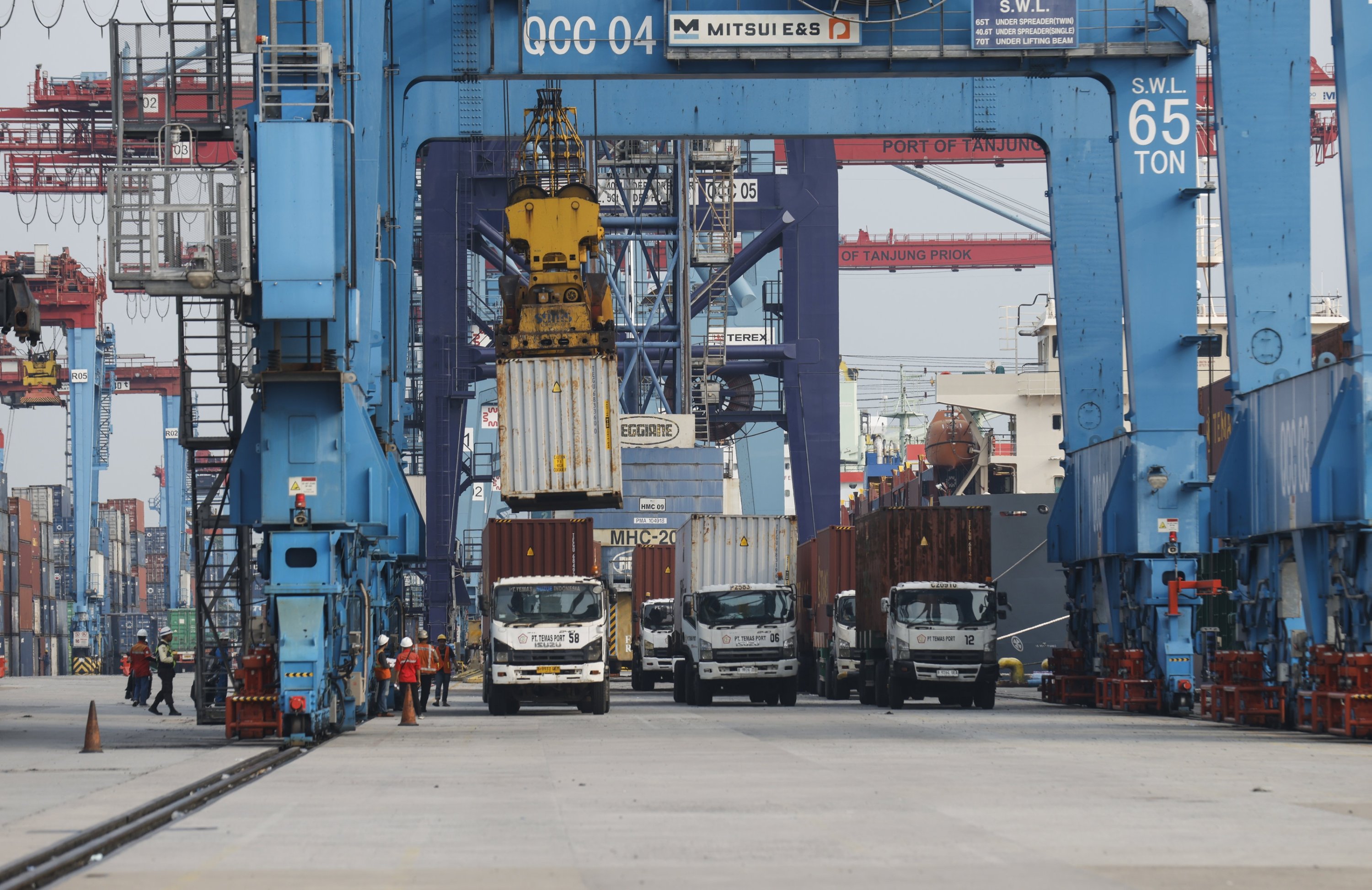
Negotiations with China are subject to an Aug. 12 deadline, but it’s likely to be extended, Bessent told Fox Business on Tuesday. He said the two sides were due to hold another round of talks, this time in Sweden, early next week.
Meanwhile, Trump said a trip to China may happen soon, hinting at efforts to stabilize U.S.-China trade relations.
A preliminary agreement announced in June paved the way for China to lift some restrictions on its exports of rare earths, minerals critical for high technology and other manufacturing.
In May, the U.S. agreed to drop Trump’s 145% tariff rate on Chinese goods to 30% for 90 days, while China agreed to lower its 125% rate on U.S. goods to 10%. The reprieve allowed companies more time to rush to try to beat the potentially higher tariffs, giving a boost to Chinese exports and alleviating some of the pressure on its manufacturing sector. But prolonged uncertainty over what Trump might do has left companies wary about committing to further investment in China.
Deadline approaching
Pressure is mounting on some countries in Asia and elsewhere as the Aug. 1 deadline for striking deals approaches.
Trump sent letters, posted on Truth Social, outlining higher tariffs some countries will face if they fail to reach agreements. He said they’d face even higher tariffs if they retaliate by raising their own import duties. South Korea’s is set at 25%. Imports from Myanmar and Laos would be taxed at 40%, Cambodia and Thailand at 36%, Serbia and Bangladesh at 35%, South Africa and Bosnia-Herzegovina at 30% and Kazakhstan, Malaysia and Tunisia at 25%.
The status of talks with India remains unclear, but progress appears to hinge on the country’s heavily protected farm sector. It faces a 26% tariff.
Nearly every country has faced a minimum 10% levy on goods entering the U.S. since April, on top of other sectoral levies.
Even after Trump has pulled back from the harshest of his threatened tariffs, the onslaught of uncertainty and higher costs for both manufacturers and consumers has raised risks for the regional and global economy. Economists have been downgrading their estimates for growth in 2025 and beyond.
The Asian Development Bank said Wednesday it had cut its growth estimate for economies in developing Asia and the Pacific to 4.7% in 2025 and 4.6% in 2026, down 0.2 percentage points and 0.1 percentage points.
The outlook for the region could be further dimmed by an escalation of tariffs and trade friction, it said. “Other risks include conflicts and geopolitical tensions that could disrupt global supply chains and raise energy prices,” as well as a deterioration in China’s ailing property market.
Economists at AMRO were less optimistic, expecting growth for Southeast Asia and other major economies in Asia at 3.8% in 2025 and 3.6% next year.
While countries in the region have moved to protect their economies from Trump’s trade shock, they face significant uncertainties, said AMRO’s chief economist, Dong He.
“Uneven progress in tariff negotiations and the potential expansion of tariffs to additional products could further disrupt trade activities and weigh on growth for the region,” he said.
Economy
Trump strikes massive tariff deal with Japan, auto stocks surge
U.S. President Donald Trump on Tuesday announced a trade agreement with Japan that reduces tariffs on auto imports and exempts Tokyo from additional duties on other goods, in return for a $550 billion package of investment and loans directed toward the United States.
It is the most significant of a clutch of agreements Trump has bagged since unveiling sweeping global levies in April, though like other deals, exact details remained unclear.
Japan’s autos sector, which accounts for more than a quarter of its U.S. exports, will see existing tariffs cut to 15% from levies totaling 27.5% previously. Duties that were due to come into effect on other Japanese goods from Aug. 1 will also be cut to 15% from 25%.
The announcement sent Japan’s benchmark Nikkei stock index climbing almost 4% to its highest in a year, led by stocks in automakers with Toyota up more than 14% and Honda nearly 11%.
“I just signed the largest TRADE DEAL in history with Japan,” Trump said on his Truth Social platform. “This is a very exciting time for the United States of America, and especially for the fact that we will continue to always have a great relationship with the Country of Japan,” he added.
Japan’s Prime Minister Shigeru Ishiba, who plans to resign after a bruising election defeat on Sunday, according to a source close to the embattled premier, hailed the tariff agreement as “the lowest rate ever applied among countries that have a trade surplus with the U.S.”
The 68-year-old leader later said that reports that he had decided to resign were “completely unfounded.”
Two-way trade between the two countries reached nearly $230 billion in 2024, with Japan running a trade surplus of nearly $70 billion. Japan is the fifth-largest U.S. trading partner in goods, U.S. Census Bureau data show.
The U.S. investment package includes loans and guarantees from Japanese government-affiliated institutions of up to $550 billion to enable Japanese firms “to build resilient supply chains in key sectors like pharmaceuticals and semiconductors,” Ishiba said.
Japan will also increase purchases of agricultural products such as U.S. rice, a Trump administration official said. Ishiba said the share of U.S. rice imports may increase under its existing framework but that the agreement did “not sacrifice” Japanese agriculture.
Bank of Japan (BOJ) Deputy Governor Shinichi Uchida called the deal “very big progress” and said it reduces uncertainty over the economic outlook.
Some economists had forecast the tariffs could have tipped Japan – the world’s fourth-largest economy – into recession. The exuberance in financial markets spread to shares of South Korean and European carmakers, as the Japan deal stoked optimism that they could strike similar deals.
But U.S. automakers signaled their unhappiness with the deal, raising concerns about a trade regime that cuts tariffs on Japanese auto imports while leaving tariffs on imports from their plants and suppliers in Canada and Mexico at 25%.
“Any deal that charges a lower tariff for Japanese imports with virtually no U.S. content than the tariff imposed on North American-built vehicles with high U.S. content is a bad deal for U.S. industry and U.S. auto workers,” said Matt Blunt, who heads the American Automotive Policy Council, which represents General Motors Ford and Chrysler parent Stellantis .
‘Mission complete’
“#Mission Complete,” Japan’s top trade negotiator Ryosei Akazawa wrote on social media platform X following a meeting with Trump at the White House on Tuesday.
Akazawa later said the deal does not cover Japanese exports of steel and aluminum, currently subject to a 50% tariff.
As part of the agreement, Japan will drop additional safety tests currently imposed on imported U.S. cars and trucks, Akazawa added, requirements that Trump has said limit sales of American-made autos there.
Some last-minute negotiations over the eye-catching investment package appear to have helped seal the deal, a photo of Akazawa’s meeting with Trump posted by one of his aides showed.
The photo posted on X by Trump’s assistant Dan Scavino, pictured the president seated opposite Akazawa with a document titled “Japan Invest America” in front of him. A sum of “$400B” written in large letters on the document was scored out, with “$500” handwritten above it.
Japan is the largest foreign investor in the United States, according to U.S. government data, with an investment position of $819 billion at the end of 2024.
Speaking later at the White House, Trump also expressed fresh optimism that Japan would form a joint venture with Washington to support a gas pipeline in Alaska long sought by his administration.
Trump aides are feverishly working to close trade deals ahead of an Aug. 1 deadline that Trump has repeatedly pushed back under pressure from markets and intense lobbying by industry. By that date, countries are set to face steep new tariffs beyond those Trump has already imposed since taking office in January.
Trump has announced framework agreements with Britain, Vietnam, Indonesia and paused a tit-for-tat tariff battle with China, though details are still to be worked out with all of those countries.
At the White House, Trump said negotiators from the European Union would be in Washington on Wednesday.
Economy
Erdoğan, Starmer discuss Eurofighter procurement, trade deal update
President Recep Tayyip Erdoğan held a phone call with British Prime Minister Keir Starmer on Tuesday to discuss bilateral ties, regional and global issues, as well as defense and trade cooperation.
The leaders reviewed recent progress on Türkiye’s potential procurement of Eurofighter Typhoon fighter jets, according to a statement by the Presidency’s Directorate of Communications.
The two sides expressed optimism that developments in this area would further strengthen defense cooperation between Ankara and London, the statement said.
Türkiye has been in negotiations to acquire up to 40 Eurofighters to enhance its air force. The jets are built by a consortium of Germany, Britain, Italy and Spain, represented by companies Airbus, BAE Systems and Leonardo.
While the U.K. has been eager to proceed with the sale and all manufacturing partners except Germany have expressed support, the deal has remained stalled for months.
But officials have recently voiced progress in negotiations.
Erdoğan on Sunday said Britain and Germany showed a “positive” stance on Türkiye’s potential purchase of Eurofighters, stressing that Ankara wants to finalize the acquisition as soon as possible.
On Tuesday, Erdoğan also told Starmer that he hopes that negotiations to update the free trade agreement (FTA) between Türkiye and the United Kingdom would conclude within this year, the statement said.
The sides have completed the first round of talks on modernizing the agreement, the Turkish Trade Ministry said on Friday.
The current agreement, signed when Britain left the European Union, has been under review to expand its scope. Talks were paused during last year’s election that saw Labour Party return to government after 14 years in opposition.
The annual trade volume between the two countries reached $22 billion in 2024, with the U.K. ranking as Türkiye’s seventh-largest trading partner. Türkiye runs a trade surplus of $8 billion.
During the phone call, Erdoğan also raised concerns over the worsening humanitarian situation in Gaza, stressing that deaths from starvation could not be prevented and that immediate and unhindered access to humanitarian aid must be ensured, according to the statement.
Economy
Industrial cuts may not pull China out of deflation easily
China’s strong rhetoric against price wars among producers is raising expectations that Beijing could initiate industrial capacity cuts in a long-awaited, yet challenging, campaign against deflation, which carries risks to economic growth.
Communist Party leaders pledged this month to step up regulation of aggressive price-cutting, with state media running its harshest warnings yet against what it describes as a form of industrial competition that damages the economy.
These signals echo Beijing’s supply-side reforms a decade ago, which aimed to reduce the production of steel, cement, glass, and coal. This was crucial in ending 54 consecutive months of falling factory gate prices.
This time, however, the fight against deflation will be much more complicated and poses risks to employment and growth, economists say. The trade war with the U.S., meanwhile, is intensifying price wars, squeezing factory profits.
Challenges Beijing didn’t face last decade include high private ownership, misaligned incentives at local and national levels and limited stimulus options in other economic sectors to absorb the job losses resulting from any capacity cuts.
Beijing views employment as a key factor in maintaining social stability. Exporters and even the state sector are already shedding jobs and cutting wages, while youth unemployment runs at 14.5%.
“This round of supply-side reform is far, far more difficult than the one in 2015,” said He-Ling Shi, economics professor at Monash University in Melbourne.
“The likelihood of failure is very high and if it does fail, it would mean that China’s overall economic growth rate will decline.”
Economists expect that any efforts by Beijing to reduce capacity will be undertaken in small, cautious steps, with officials – keen to achieve annual economic growth of roughly 5% – keeping a close eye on spillover effects.
An expected end-of-July meeting of the Politburo, a decision-making body of the Party, might issue more industry guidelines, although the conclave rarely delivers a detailed implementation roadmap.
Analysts expect Beijing to first target the high-end industries that it once billed as the “new three” growth drivers, but which state media now singles out for fighting price wars: autos, batteries, and solar panels.
Their expansion accelerated in the 2020s as China redirected resources from the crisis-hit property sector to advanced manufacturing to move the world’s No.2 economy up the value chain.
However, China’s industrial complex, which accounts for a third of global manufacturing, appears bloated across the board.
Most sectors have capacity utilisation rates below the 80% “healthy” level, Societe Generale analysts said, blaming weak domestic demand and an investment-driven growth model that favours producers over consumers.
U.S. and EU officials have repeatedly complained that this model is flooding global markets with cheap goods made in China and endangers their domestic industries.
A foreign chemicals company manager, surnamed Jiang, who requested partial anonymity to discuss the industry, said that overcapacity in her sector was evident as early as 2023, yet firms continue to expand.
“If money is cheap and abundant, any company thinks it won’t go bankrupt and can crush competitors to death,” Jiang said.
Local incentives
For all the state support manufacturers receive, most are privately owned, unlike the raw material producers Beijing trimmed last decade, largely through blunt administrative orders.
Reducing capacity now requires a less predictable process of curbing subsidies, cheap land supply, preferential loans or tax rebates, then letting markets pick winners and losers.
But the local officials who would have to implement this have the opposite incentive: developing industry champions that draw supply chain investments and employment to their region.
“Local governments, in their efforts to transform the local economy, encouraged firms to invest in these new sectors,” like solar or batteries, a policy adviser said on condition of anonymity due to the topic’s sensitivity.
“There’s nothing inherently wrong with transformation and upgrading, but the problem is that everyone is targeting the same few sectors,” said the adviser, adding that the U.S. trade war has exposed such industries as being “too big.”
Yan Se, deputy director of the Institute of Economic Policy at Peking University, said local government resistance would turn “important and necessary” capacity cuts into a long-term, gradual process that won’t end deflationary pressure on its own.
Stimulating demand would be more effective, Yan told a conference last week.
Forever blowing bubbles
Producer prices dropped for the 33rd month in June.
China faces a painful trade-off between a deeper and shorter stretch of price falls as output cuts trigger job losses and a longer run of overcapacity and deflation that delays the blow to employment, economists say.
Macquarie estimates that the reforms of the last decade chopped tens of millions of jobs. However, an ambitious project to redevelop shantytowns across China, estimated by Morgan Stanley at 10 trillion yuan ($1.4 trillion), offered displaced workers new opportunities.
Manufacturing is now much less labor-intensive. Still, jobs will be lost and “there’s no way” other economic sectors, also facing weak consumer demand, can absorb the shock, said Monash University’s Shi.
In another echo of the last decade, high-level discussions of urban redevelopment resurfaced last week. But any new investment in that area would likely be too small to compensate for lost industrial activity and jobs.
“I don’t think we can expect real estate to digest job losses from supply-side reforms anymore,” said John Lam, head of Greater China property research at UBS.
“It was used for that in the past and it created overcapacity in our sector,” said Lam. Authorities “don’t seem to be going in that direction, which I think is correct.”
-
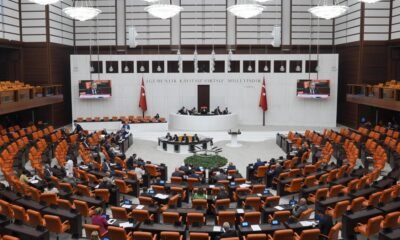
 Politics2 days ago
Politics2 days agoTurkish opposition lags amid shrinking support
-
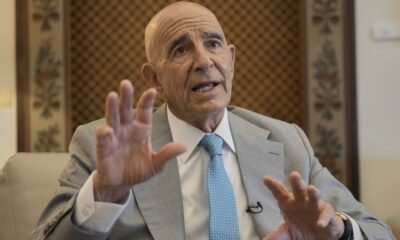
 Refugees2 days ago
Refugees2 days agoUS envoy doubles down on support for Syria’s government and criticizes Israel’s intervention
-

 Refugees3 days ago
Refugees3 days agoTurkey’s president says his support for a two-state deal on ethnically split Cyprus is absolute
-

 Lifestyle2 days ago
Lifestyle2 days agoZindan Cave: Türkiye’s hidden gem for history, nature lovers
-

 Politics2 days ago
Politics2 days agoTürkiye battles smear campaign over its support for Palestine
-
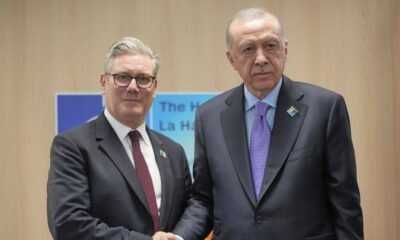
 Economy1 day ago
Economy1 day agoErdoğan, Starmer discuss Eurofighter procurement, trade deal update
-
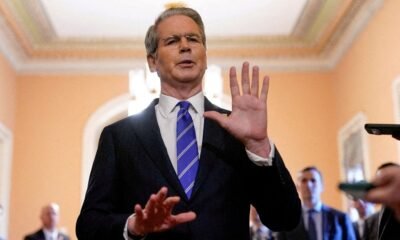
 Economy2 days ago
Economy2 days agoUS Treasury chief says ‘entire’ Federal Reserve needs to be examined
-

 Lifestyle1 day ago
Lifestyle1 day agoBodrum unveiled: Timeless escape on Türkiye’s turquoise coast




